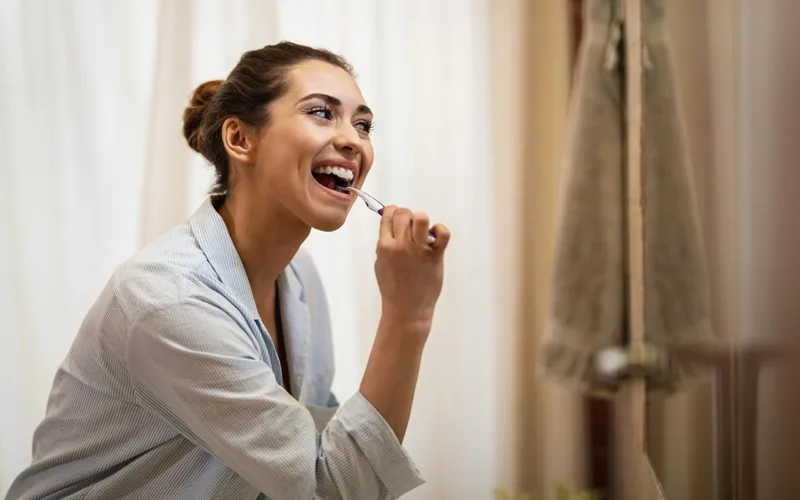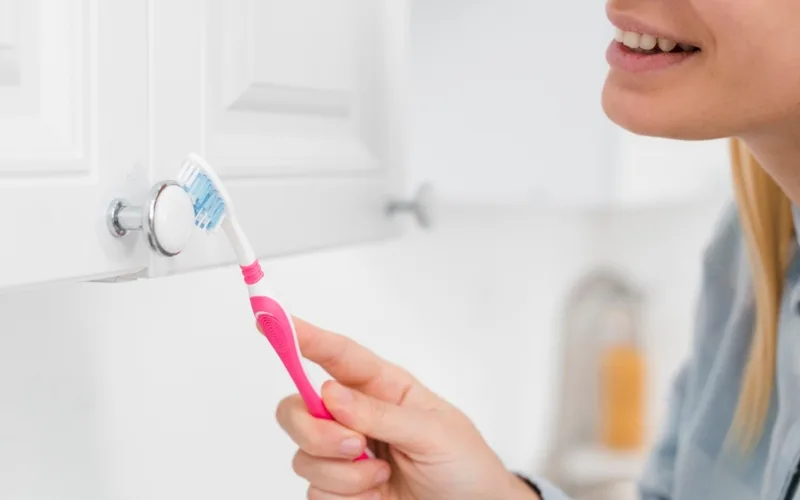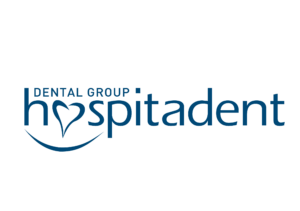
Brushing teeth is one of the most important steps in maintaining oral and dental health and plays a significant role in oral hygiene. Regular brushing is necessary to remove bacteria and plaque that accumulate in the mouth, and it’s equally important to brush using the correct technique. Paying attention to proper brushing techniques is crucial to avoid various dental problems in the future.
Incorrect brushing can lead to issues ranging from tooth decay to gum problems. Therefore, it’s vital to prevent such problems while maintaining oral health by brushing correctly. We will provide all the details, from how teeth should be brushed to the selection of the toothbrush and toothpaste.
When Should Teeth Be Brushed?
The timing of brushing is just as important as how it’s done. Brushing teeth at the right times can help support dental health. So, when exactly should teeth be brushed? First, it’s better to brush before breakfast than after it, as it removes bacteria and plaque that accumulate overnight, preventing them from spreading further during breakfast. If brushing after breakfast is preferred and acidic beverages were consumed, it’s best to wait for about 30 minutes before brushing.
Brushing teeth after meals also significantly reduces plaque buildup and the risk of cavities. After eating, wait 30 minutes before brushing. After snacks, rinse the mouth with plenty of water. The most crucial time is brushing teeth before bed, as it’s the most effective time to prevent gum disease and tooth decay.
Electric vs Manual Toothbrush: Which Should Be Used?
A common question is whether to use an electric or manual toothbrush. There is often misinformation on social media, causing concerns about using electric toothbrushes. Both electric and manual toothbrushes can effectively clean teeth. You can choose between the two by evaluating their advantages.
Electric Toothbrushes
Electric toothbrushes are very effective at cleaning teeth. The motorized brush head moves so that the bristles come into more prolonged and frequent contact with the teeth, ensuring more thorough cleaning. Some models can make hundreds of movements per minute, which helps remove plaque and food particles quickly.
Electric toothbrushes are also easy to use. Simply move the brush around the mouth to clean all the teeth. Electric toothbrushes are a convenient choice for children, elderly people, and those with physical limitations. Many models have sensors that stop the brush if excessive pressure is applied, preventing damage to the enamel.
Manual Toothbrushes
Traditional manual toothbrushes require movement by hand to clean teeth. One significant advantage of manual brushes is their affordability. They are portable, lightweight, and a better choice for frequent travelers since they don’t require batteries or charging. With their simple design, manual toothbrushes are also easy to use.
What Features Should a Toothbrush Have?
When choosing a toothbrush, considering certain factors will make it easier to select the product best suited to your oral and dental structure. Therefore, answering the question of which toothbrush to choose is very important. The type of toothbrush that should be used varies according to individual oral health needs. Here are some key points to consider when choosing a toothbrush:
Brush Head
A smaller brush head makes it easier to reach the back teeth. For those with smaller mouths, it’s advisable to choose toothbrushes with a small head. Larger brush heads, on the other hand, can clean more teeth in a shorter amount of time, as they cover more area with a single stroke.
Brush Bristles
Toothbrush bristles are categorized into three types: soft, medium, and hard.
- Soft Bristles
Soft bristles are ideal for people with tooth sensitivity or gum recession. They should also be used by individuals undergoing orthodontic treatment or those with mouth sores. - Medium Bristles
Toothbrushes with medium bristles are suitable for those with healthy teeth and no gum issues. Essentially, those without oral health problems can opt for medium bristles. - Hard Bristles
Hard bristles are suitable for individuals who suffer from significant tartar and plaque buildup. However, these brushes should be used carefully to avoid harming the gums.
Brush Type
Toothbrushes come in two types: manual and electric. Electric or rechargeable toothbrushes can provide more effective cleaning because they clean more areas in a shorter period of time. These products are highly recommended for a thorough clean. However, for travel, manual toothbrushes are more convenient to carry.
Which Type of Toothpaste Should I Use?
Toothpaste selection is another important factor when brushing teeth. It’s crucial to choose toothpaste that suits your oral and dental health condition.
For Tooth Sensitivity
Toothpaste with sensitivity-relieving properties can be used. These typically contain potassium nitrate or strontium chloride and are effective in reducing sensitivity to hot and cold.
For Teeth Whitening
For those who need to remove stains and yellowing, whitening toothpaste can be preferred. However, it’s important not to use these products for prolonged periods, as they may cause enamel wear.
For Gum Problems
Those with gum issues should choose toothpaste formulated to support gum health. These products help protect and maintain the health of the gums.
For Tartar and Plaque Buildup
People with significant tartar or plaque problems can use toothpaste designed to prevent tartar buildup. These products prevent plaque from hardening and slow down the formation of tartar.
Fluoride vs Non-Fluoride Toothpaste
Toothpaste with fluoride helps prevent tooth decay. It also supports the enamel and reduces the risk of wear on the enamel layer. Non-fluoride toothpaste is an alternative for those who wish to avoid fluoride.
How Should You Brush Your Teeth?

As mentioned before, brushing teeth is important, but using the correct technique is equally crucial. Here is the proper way to brush your teeth:
- A small amount of toothpaste, about the size of a pea, is enough. There’s no need to use excessive toothpaste.
- Hold the toothbrush at a 45-degree angle to make it easier to access the tooth surfaces.
- When brushing, avoid pressing too hard on the teeth. Light pressure is sufficient to remove food particles and plaque from the surface.
- Brush the chewing surfaces of the teeth by moving the brush back and forth.
- The brushing process should take at least 2 minutes.
- After brushing, make sure to clean your tongue as well.
- Always use dental floss after brushing to clean between your teeth.
Things You Should Know About Brushing Teeth
There is a lot of misinformation about brushing teeth in society. By knowing the correct facts, you can achieve much more effective oral hygiene. Here’s what you need to know:
Why Is Brushing Teeth So Important?
Because bacteria and plaque that accumulate in the mouth can jeopardize the health of both the teeth and gums over time. The solution to preventing this is regular brushing. Brushing your teeth 2-3 times a day helps maintain oral health and prevent bad breath, tooth decay, and gum diseases.
Is Brushing Once a Day Enough?
No, brushing your teeth twice a day is considered sufficient. It is particularly important to brush your teeth in the morning and right before bed to maintain oral health. Brushing only once a day is not enough to ensure good oral hygiene.
Why Do My Gums Bleed When I Brush My Teeth?
Normally, brushing teeth does not cause gum bleeding. If you experience bleeding, there may be an issue with your gums. Problems like gum inflammation can lead to bleeding. Plaque buildup can also irritate the gums. Many gum issues can cause bleeding, and those who experience this should visit a dentist as soon as possible.
Frequently Asked Questions About Brushing Teeth
We know that there have been several questions about brushing teeth for a long time. Below are the most frequently asked questions along with their answers.
Is Brushing Teeth with Baking Soda Harmful?
Brushing teeth with baking soda is commonly used for teeth whitening purposes. It is usually harmless if applied occasionally, but frequent use can lead to enamel erosion. You should know that the granules in baking soda have an abrasive effect on tooth enamel. Additionally, brushing with baking soda too often may also cause harm to the gums.
Does Baking Soda Clean Plaque?
No, using baking soda while brushing teeth can help whiten the teeth slightly, but it is not effective in removing plaque. For plaque cleaning, you should consult your dentist.
Is Coconut Oil Beneficial for Teeth?
Yes, coconut oil contains components that are beneficial for oral health. It has antibacterial properties and can help remove some of the bacteria that accumulate in the mouth. Therefore, coconut oil can be used during brushing. However, it should be noted that this oil alone cannot clean the teeth completely. A proper toothpaste must still be used, with coconut oil acting as an auxiliary material.
Is Brushing Teeth with Salt Good?
Salt is known for its natural antiseptic properties, and many people use it to brush teeth. Salt can help clean some of the plaque on the tooth surfaces, but excessive use can harm the tooth enamel. It should be remembered that salt has an abrasive effect. This abrasive effect can negatively affect not only the tooth enamel but also the gums. Therefore, excessive use should definitely be avoided.
Can I Brush My Teeth After a Nose Job?
Yes, after a rhinoplasty surgery, if your doctor hasn’t prohibited it, brushing teeth is not harmful. In fact, paying attention to oral hygiene after rhinoplasty is extremely important. Teeth can be brushed gently without applying pressure to the nose area. However, if there is bleeding in the nose or excessive swelling, your doctor may ask you to temporarily refrain from brushing your teeth. In such cases, you should follow your doctor’s advice.
Can I Brush My Teeth After a Tooth Extraction?
No, it is not advisable to brush your teeth immediately after a tooth extraction. For the first 24 hours following the extraction, you should avoid touching the extraction site, and brushing teeth should be postponed for 24 hours. After this period, you can brush your teeth, but avoid touching or brushing the extraction site to prevent bleeding.
Is Brushing Teeth Too Hard Harmful?
Yes, brushing teeth too vigorously can damage both the teeth and gums. It can cause enamel wear and lead to gum irritation. Brushing twice or three times a day for about 2 minutes each time is sufficient.
For your information –> Receding Gums
How Can You Help Children Brush Their Teeth?
First, it is important to choose toothbrushes and toothpaste suitable for children. Children should be both informed about how to brush their teeth and shown how to do it practically. Toothbrushes and toothpaste with colorful and fun designs can help children take an interest in brushing their teeth.
Should I Use Mouthwash?
Using mouthwash after brushing teeth is a preferred method to support oral health. Mouthwash types may have different properties due to their ingredients, such as preventing tartar formation or eliminating bad breath. You can consult your dentist for recommendations on which mouthwash to use after brushing your teeth.
It might interest you –> Yellow Teeth
How to Use Dental Floss?
Take about 40-45 cm of dental floss, wrap it around your fingers, and gently slide it between your teeth and along the tooth surfaces. It should form a “C” shape to clean the surfaces. Although dental floss is commonly used after brushing, it can also be used before brushing.
How to Use an Interdental Brush?
The interdental brush is a tool with a special design, used for cleaning wide gaps between teeth. Similar to brushing, the interdental brush is used to clean between the teeth by moving it back and forth. After cleaning each space, the brush should be removed and cleaned. Then, it should be used in the next gap. Care should be taken while using the interdental brush to avoid harming the gums. While these products are considered an alternative to dental floss, it’s important to note that this information is not entirely correct. The purposes of using interdental brushes and dental floss are different.
Check it out –> Antalya Dental Clinic
